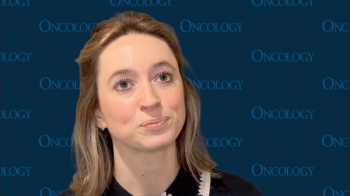
Oncology NEWS International
- Oncology NEWS International Vol 18 No 5
- Volume 18
- Issue 5
Less toxic protocol proves efficacious in chronic lymphocytic leukemia pts
A triple therapy with fludarabine, cyclophosphamide, and rituximab (Rituxan) was hailed as the new standard of care for chronic lymphocytic leukemia at ASH 2008 in San Francisco. Now a new study has deemed low-dose fludarabine and cyclophosphamide combined with high-dose rituximab (FCR-Lite) as highly effective in untreated CLL patients.
ABSTRACT: New chemoimmunotherapy regimen goes one better than the standard of care but comes with a higher dose of a costly drug.
A triple therapy with fludarabine, cyclophosphamide, and rituximab (Rituxan) was hailed as the new standard of care for chronic lymphocytic leukemia at ASH 2008 in San Francisco. Now a new study has deemed low-dose fludarabine and cyclophosphamide combined with high-dose rituximab (FCR-Lite) as highly effective in untreated CLL patients.
The FCR-Lite regimen turned in dramatically reduced rates of neutropenia (grade 3-4), compared with a previous study of standard FCR. Moreover, FCR-Lite can be safely administered in the community setting, according to a single-arm study of 50 patients conducted at the University of Pittsburgh (J Clin Oncol 27:498-503, 2009).
Results of two phase III studies-one in 817 treatment-nave patients and one in 552 relapsed/refractory patients-showed at least a 10-month improvement in progression-free survival when FCR was compared with FC (ASH abstracts 325 and LBA1). FCR-Lite was developed to overcome the high rates of grade 3-4 neutropenia reported with FCR, according to lead author Kenneth A. Foon, MD. Dr. Foon has received honoraria from Genentech.
“We reduced the dose of fludarabine and cyclophosphamide infused on three successive days once monthly for six cycles,” explained Dr. Foon, who is now at the Nevada Cancer Institute in Las Vegas. The dose of rituximab was increased to 500 mg/m2 every other week, “based on data demonstrating superiority of dose intensity rituximab,” he added. Patients also received maintenance rituximab 500 mg/m2 every three months until relapse.
The study enrolled 50 patients (see Table 1), 68% of whom were treated by community oncologists. Patients were pretreated with oral diphenhydramine, oral acetaminophen, and oral or intravenous dexamethasone. Treatment was interrupted for grade 3 and 4 toxicity and resumed at a slower infusion rate when symptoms abated. All patients received prophylaxis with oral trimethoprim-sulfamethoxazole and acyclovir, continued for six months after the last dose of chemotherapy. Filgrastim (Neupogen) or pegfilgrastim (Neulasta) was initiated 24 hours after chemotherapy.
At a median follow-up of 27.1 months, all 50 patients were assessable for overall and progression-free survival, while 48 were assessable for response. All patients responded to FCR-Lite, with 37 (77%) achieving complete response (CR) and 11 (23%) achieving partial response. The median duration of CR was 22.3 months, and none of the patients had relapsed at the time of study publication.
A 17p chromosomal deletion was the only consistent finding among patients who did not achieve CR; none of the three patients with 17p deletions achieved CR, and all died of CLL-related complications, the authors stated.
“Our results confirm and extend the excellent results reported for FCR but clearly demonstrate a major reduction in grade 3 or 4 neutropenia (with FCR-Lite),” the authors wrote. They suggested that the new regimen may be amenable to combination with promising new CLL therapies. These include lenalidomide (Revlimid), oblimersen (Genasense), alemtuzumab (Campath), and flavopiridol.
Dr. Foon noted that it is still too early in follow-up to report the impact of FCR-Lite on survival. He also said that the potential benefit of maintenance rituximab as used in this trial will require additional follow-up of progression-free and overall survival. The study population had a higher percentage of Rai stage 1-2 patients (84%), compared with other studies of FCR, which would predict for higher response rates, he pointed out.
Articles in this issue
over 16 years ago
Who's Newsover 16 years ago
Push for comparative effectiveness researchover 16 years ago
Lack of persuasive data continues to plague PSA testingover 16 years ago
Clinical trials flourish in international settingover 16 years ago
Global lung ca staging lexicon undergoes major overhaulNewsletter
Stay up to date on recent advances in the multidisciplinary approach to cancer.





















































































